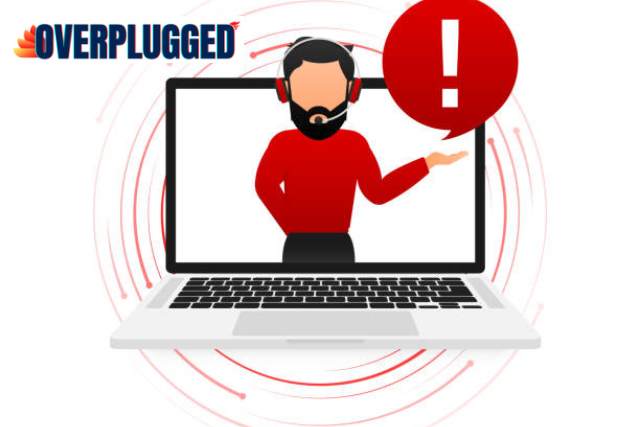Top Features to Look For in a Laptop For Virtual Assistance In 2024

In the ever-evolving landscape of virtual assistance, your choice of laptop can make or break your productivity. Today, I unravel the top features to look for in a laptop for virtual assistance. Whether you’re just stepping into the virtual workspace or looking to upgrade, this guide will empower you with the knowledge to make an informed decision.
As a VA, your productivity and efficiency hinge on the tools you employ, with your laptop serving as your primary workstation. Selecting the best laptop for virtual assistance is crucial to ensuring seamless operations, client satisfaction, and your own professional growth.
So go ahead and find the top features to look for in a laptop for virtual assistance:
Contents
- 1 Top Features to Look for in a Laptop for Virtual Assistance
- 1.1 1. Powerful Processor: The Heart of Your Virtual Assistant Workstation
- 1.2 2. Ample RAM: Multitasking Made Easy
- 1.3 3. Storage: The Repository of Your Virtual Assistance Files
- 1.4 4. Display: A Clear Window into Your Virtual Assistance World
- 1.5 5. Battery Life: Powering Your Virtual Assistance Journey
- 2 What are the Minimum System Requirements for Virtual Assistant?
- 3 What is the Best Laptop for a Virtual Assistant
- 4 FAQs About Top Features to Look For in a Laptop for Virtual Assistance
- 4.1 1. What computer specs do I need for a virtual assistant?
- 4.2 2. What are the top 3-5 skills that make for a great virtual assistant?
- 4.3 3. What equipment do I need to be a virtual assistant?
- 4.4 4. Do I need a laptop to become a virtual assistant?
- 4.5 5. How do beginners start as virtual assistants?
- 4.6 6. How do I get my first client as a virtual assistant?
- 4.7 7. How do I become a successful VA?
- 4.8 8. How can I become a VA without experience?
- 4.9 9. What is the best desktop for virtual assistants?
- 4.10 10. Which Laptop for Virtual Assistants Should You Buy?
- 5 Summing Up
Top Features to Look for in a Laptop for Virtual Assistance

Your virtual assistance endeavors demand a laptop that can handle the multifaceted tasks you encounter daily. Here are the top features to look for in a laptop for virtual assistance selection:
1. Powerful Processor: The Heart of Your Virtual Assistant Workstation
Your laptop’s processor is the brains of the operation, responsible for executing tasks and ensuring smooth performance. For virtual assistance, a powerful processor is essential, enabling you to handle multiple applications simultaneously, manage email and calendars efficiently, and process data without encountering lag or slowdowns. Aim for a processor from the Intel Core i5 or AMD Ryzen 5 family, or higher, to guarantee the responsiveness you need.
2. Ample RAM: Multitasking Made Easy
Random access memory (RAM) acts as the short-term memory of your laptop, storing data that is actively in use. Ample RAM is crucial for virtual assistants, allowing you to switch between tasks, manage multiple browser tabs, and run demanding software without experiencing performance hiccups. A minimum of 8GB of RAM is recommended, but consider upgrading to 16GB if you plan on handling heavy workloads or using memory-intensive applications.
3. Storage: The Repository of Your Virtual Assistance Files
Virtual assistants deal with a diverse range of files, from client documents to project deliverables. A spacious storage drive is essential to accommodate your data needs. Solid-state drives (SSDs) are the preferred choice over traditional hard disk drives (HDDs) due to their superior speed and durability. Opt for an SSD with at least 256GB of storage, and consider upgrading to 512GB or 1TB if you handle large files or anticipate future storage requirements.
4. Display: A Clear Window into Your Virtual Assistance World
Your laptop’s display is your gateway to the digital world, so it’s crucial to choose one that provides a comfortable and visually appealing experience. A screen size between 13 and 15 inches is generally recommended for virtual assistants, offering a balance of portability and viewing comfort. Consider features like anti-glare to minimize reflections and high resolution for crisp visuals.
5. Battery Life: Powering Your Virtual Assistance Journey
Virtual assistants often work on the go, whether it’s from a home office, a coffee shop, or a client’s site. A long-lasting battery is essential to ensure uninterrupted productivity. Aim for a laptop that can deliver at least 5–6 hours of battery life on a single charge to power your virtual assistance endeavours throughout the day.
What are the Minimum System Requirements for Virtual Assistant?

The minimum system requirements for a virtual assistant laptop will vary depending on the specific tasks you need to perform. But, as a general rule of thumb, you should look for a laptop with the following specifications:
- Processor: Intel Core i5 or AMD Ryzen 5 processor
- RAM: 8GB of RAM
- Storage: 256GB SSD
- Display: 13-15 inch display
- Battery life: 5–6 hours of battery life
These specifications will ensure that your laptop has enough power to handle the most common virtual assistant tasks, such as:
- Managing email and calendars
- Processing data
- Creating reports and presentations
- Researching and writing content
- Providing customer support
What is the Best Laptop for a Virtual Assistant

Choosing the best laptop for a virtual assistant depends on various factors, including your specific needs, budget, and preferences. However, here are some laptops that are generally well-regarded for their performance, reliability, and features suitable for virtual assistance tasks:
Lenovo ThinkPad X1 Carbon:
- Processor: 10th Gen Intel Core i5/i7
- RAM: Up to 16GB
- Storage: Up to 1TB SSD
- Display: 14-inch FHD or 4K
- Battery Life: Up to 15 hours
Dell XPS 13:
- Processor: 10th Gen Intel Core i5/i
- RAM: Up to 16GB
- Storage: Up to 1TB SSD
- Display: 13.4-inch FHD or 4K
- Battery Life: Up to 12 hours
MacBook Air (M1, 2020):
- Processor: Apple M1 chip
- RAM: 8GB (configurable to 16GB)
- Storage: Up to 2TB SSD
- Display: 13.3-inch Retina
- Battery Life: Up to 18 hours
HP Spectre x360:
- Processor: 10th Gen Intel Core i5/i7
- RAM: Up to 16GB
- Storage: Up to 1TB SSD
- Display: 13.3-inch FHD or 4K
- Battery Life: Up to 22 hours
ASUS ZenBook 14:
- Processor: 11th Gen Intel Core i5/i7
- RAM: Up to 16GB
- Storage: Up to 1TB SSD
- Display: 14-inch FHD
- Battery Life: Up to 21 hours
FAQs About Top Features to Look For in a Laptop for Virtual Assistance
Here are 10 FAQs about the Top features to look for in a laptop for virtual assistance:
1. What computer specs do I need for a virtual assistant?
To optimize your virtual assistant experience, ensure your computer meets these specs:
- Processor: A quad-core processor with a speed of 2.0 GHz or higher.
- RAM: Aim for at least 8GB, but 16GB is better for efficient multitasking.
- Storage: A solid-state drive (SSD) with a minimum of 256GB for faster data access.
- Operating System: Choose a stable OS like Windows 10 or macOS.
- Graphics: A decent integrated GPU for smooth display performance.
2. What are the top 3-5 skills that make for a great virtual assistant?
- Organizational Skills: Keeping tasks, schedules, and files organized is essential.
- Communication Skills: Clear and effective communication is vital for client interactions.
- Tech Savvy: Proficiency in relevant tools and technology for virtual tasks.
- Time Management: Efficiently managing tasks and deadlines.
- Adaptability: Being flexible and adaptable to different tasks and clients’ needs.
3. What equipment do I need to be a virtual assistant?
Essential equipment includes a reliable computer, a high-quality headset, a comfortable chair, and a dedicated workspace. Depending on your tasks, you might also need software tools, such as project management or communication apps.
4. Do I need a laptop to become a virtual assistant?
While a laptop provides flexibility, you can also use a desktop if it meets the required specifications. The key is to have a reliable computer with the necessary features for virtual assistance tasks.
5. How do beginners start as virtual assistants?
- Skill Assessment: Identify your strengths and skills.
- Build a Portfolio: Showcase relevant skills and experiences.
- Online Presence: Create a professional online profile.
- Networking: Connect with other virtual assistants and potential clients.
- Platforms: Join freelance websites or virtual assistant platforms to find opportunities.
6. How do I get my first client as a virtual assistant?
- Networking: Utilize social media and professional platforms.
- Freelance Websites: Create profiles on platforms like Upwork or Fiverr.
- Cold Pitching: Reach out to potential clients directly with a tailored pitch.
- Referrals: Ask for referrals from friends, family, or previous clients.
- Offer Free Workshops: Showcase your skills through free workshops or webinars.
7. How do I become a successful VA?
- Continuous Learning: Stay updated on industry trends and tools.
- Communication: Maintain clear and consistent communication with clients.
- Efficiency: Streamline your workflow for maximum productivity.
- Reliability: Deliver high-quality work within agreed-upon deadlines.
- Client Relationships: Nurture positive client relationships for repeat business.
8. How can I become a VA without experience?
- Skill Development: Learn relevant skills through online courses or tutorials.
- Freelance Platforms: Start on platforms that welcome beginners.
- Internships: Consider virtual assistant internships for hands-on experience.
- Networking: Connect with experienced VAs for guidance and opportunities.
9. What is the best desktop for virtual assistants?
The ideal desktop for virtual assistants depends on specific requirements, but options like the Dell OptiPlex series or the Apple iMac are often recommended for their performance, reliability, and multitasking capabilities. Evaluate based on your budget and preferences.
10. Which Laptop for Virtual Assistants Should You Buy?
As a virtual assistant, you rely on your laptop to help you manage your clients’ tasks and meet their deadlines. That’s why it’s important to choose a laptop that is powerful, reliable, and portable. Here are some of the best laptops for virtual assistants:
- Lenovo ThinkPad E15
- Acer Aspire 5
- Apple MacBook Air
- Microsoft Surface Laptop 4
- Dell XPS 13
Summing Up
In the dynamic world of virtual assistance, having the right laptop is paramount. When selecting your ideal work companion, focus on the top features to look for in a laptop for virtual assistance.
With the right laptop, you’ll not only meet but exceed the demands of the virtual assistance realm. Choose wisely, and let your laptop empower your virtual journey.
